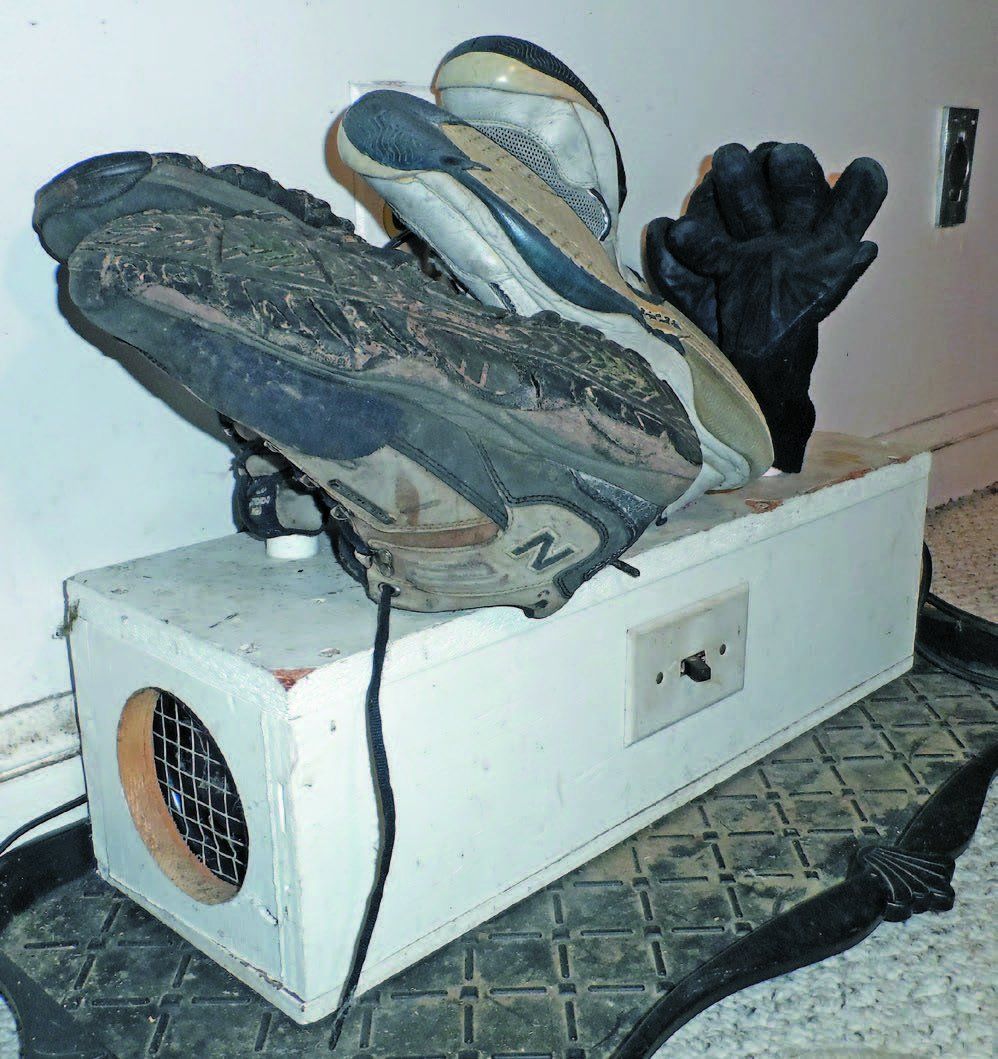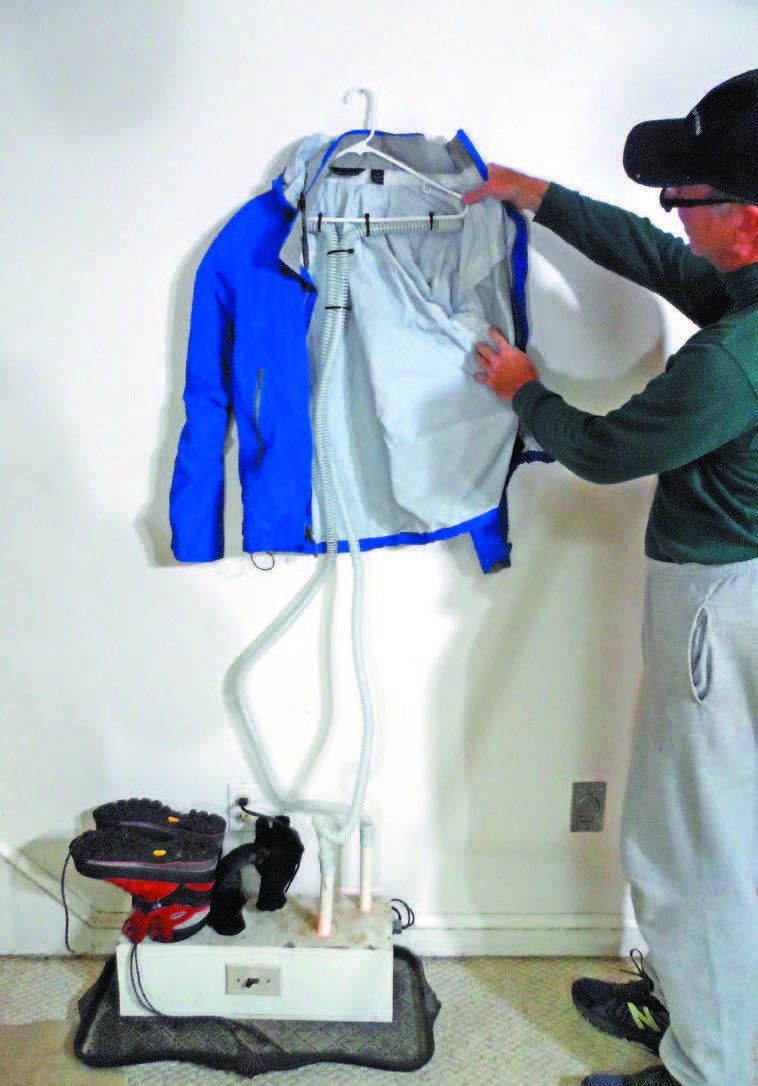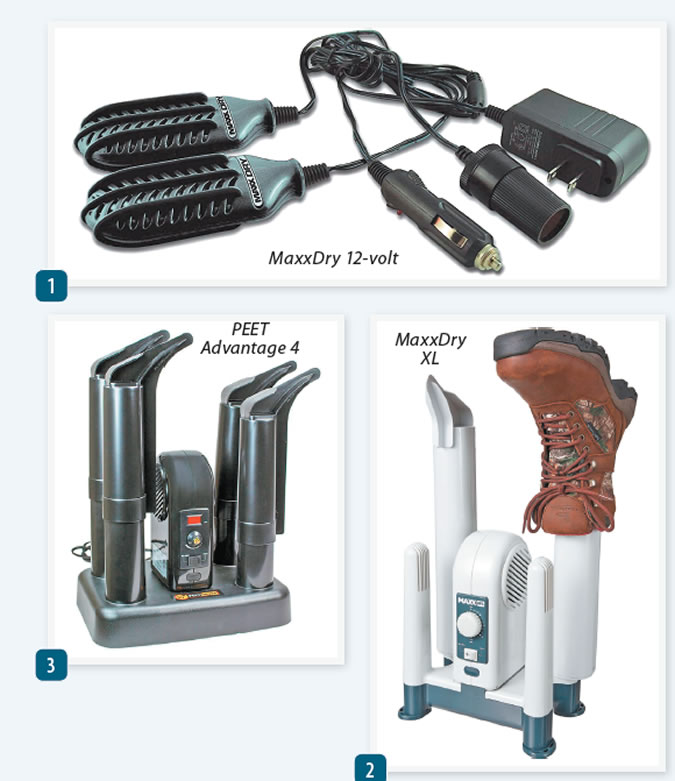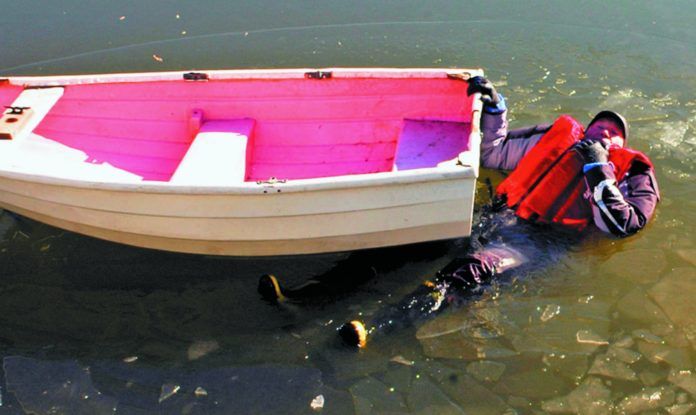I like the outdoors. I sail year-round, and I can endure as much heat and cold as my passions demand. But whether it is summer or winter, I just can’t abide cold, wet feet. There is something about damp socks that chills me through. If my feet are warm, I’m warm.
Savvy skiers know all about this. Ski boots become sodden with sweat after a hard day on the slope and are glacially slow to dry. There are few things more unpleasant than sliding hands into wet gloves and feet into wet boots; of course, damp foul weather gear springs to mind. There is also the smell; leave your ski boots damp for a few days, and the bacteria spring into action. The same is true for deck shoes and foul weather gear; the faster you get them dry, the fresher they stay. I built my first boot drier to deal with the damp gloves and snowboots of a small child, but I now use it year round, more often for deck shoes and my dry suit than for boots.
The key to efficient drying is getting air flowing to every extremity of the gear, focusing on places where natural currents are slow to work. Heated driers can get the most sodden boot dry and warm within two hours. In a heated or air conditioned house, unheated air will get it done in 4 hours. For boots, you need extensions on the air tubes to keep them from flopping over and to drive the air into the toes (available for all these, but check the description-sometimes they are included, and sometimes they are not).
Google will reveal many simple designs. Described below is a simple drier I have built for my use, and duplicated with minor variations for my daughter and for friends. As near as I can tell, they last forever, with the occasional fan or light bulb replacement. The advantage of a home-built version is that you can make it fit any number of boots and gloves, and add extensions for drying foul weather gear, options that are not available on the retail market.
The fan. The local computer store or Amazon will have a 120 mm 120 volt muffin fan. This is mounted to the end board with long deck drywall screws. About $20.
Intake screen. Its good to have something to keep fingers and clothing out of the fan. A square of hardware cloth or window screen stapled over the fan will do the trick.
Heat. A 60-watt light bulb mounted in an incandescent lamp holder (any hardware store) provides all the heat you need. The drier will work without it, but it speeds things up and warm shoes feel nice. Wire this in parallel to the fan. Note: This needs to be an old-school 60-watt incandescent bulb.
Switch. Salvage a cord. Buy a single box, single wall switch and cover plate, and install this in the side of the box. Connect the hot side of the cord to one side of the switch, the positive leads of the light and fan to the other side. Join the cord neutral to the neutral of the fan and light with a wire nut (tape the nuts for extra security). Total wiring costs are about five dollars.
The box. A plain pine box made from 3/4-inch scraps, about 5- by 5- by 12-inch provides room for the fan at the end, the switch on the side, and the riser pipes on the top. It also provides enough weight to keep it stable even with boots piled on. Assemble with deck screws so that it can be taken apart to replace the bulb.
Risers. The risers can be -inch PVC pipe stubs long enough to hold the tallest boot, with outlet holes drilled sideways so that the insole of the boot can’t block the airflow. Drill holes to tightly fit the PVC tubes fit and secure them in place with 3M 5200 or a similar adhesive sealant.
Got wet foul weather gear or a dry suit that gets stuffy? Extend a pair of the risers with hoses lashed to a clothes hanger. We used retired CPAP (sleep aid device) hoses, but anything 1-inch ID will do. Voila! Instant jacket drier.

Product Reviews
We didn’t test these side-by-side. We have used all of them through friends and only listed the ones we prefer. All of these have four ports, suitable for a pair of boots and gloves or two pairs of boots. There are two-port dryers available, but if you need a dryer, you’ll be much happier with the four port version. The ones we did not like either relied on natural convention (very slow), were designed to rely on a forced air duct (not fast and useless in the summer), or only dried two boots.
MaxxDry Travel Dryer
The 12-volt option is a attractive for on-boat use, but we found these too slow to be practical. You’re better off to set the shoes in the sun or in front of a heater vent.
Bottom line: We prefer units with fans.
MaxxDry Heavy Duty
A fan and heating element move 100F air through the four pylons. Extensions slide over the pylons for boots. There is a little more noise than the DIY version, but so long as its not in the living room it hardly matters. An adjustable timer cuts it off.
Bottom line: Recommended.

PEET Original (36 W)
A small amount of heat and convection move air through the shoe. It only does two at a time and is rather slow, but it is quiet and does not use much power
Bottom Line: We prefer units with fans.
PEET Advantage 4
The first manufacture to popularize boot dryers, this is our favorite model. The risers are designed to focus air in the toes, and this time, PEET added a fan. A timer cuts it off.
Bottom line: Recommended.
Field and Stream
Much like the Maxxdry, it forces warm air into the boots and has a timer. Also a little noisy.
Bottom line: Recommended.
Conclusions
I don’t mind getting wet so long as I can get dry again. I like protecting my shoe, boot, and clothing investments by avoiding stink and rot. If you regularly sail in the cold and wet, you need one of these. You just don’t know it. If you don’t have the time to build your own dryer, the Peet Advantage 4 is a good bet.
Drew Frye is a technical editor for Practical Sailor. He is the author of the book Rigging Modern Anchors. He also blogs at his website www.blogspot.saildelmarva.com.

The boot heaters we looked at are designed primarily for snow and ice sports, but with enough battery capacity and an efficient charging system, they can be used on board.
To be effective requires a fan, and all the fan-equipped dryers we tested ran on AC Power – except for the DIY version, which can be designed to run on 12-volt as well.
If you run your dryer from an DC-to-AC inverter on board, make sure the inverter rating is about double that of your dryer (75W- 300W), and confirm you have adequate battery capacity. Two port dryers exist, but the gains in efficiency are small, and four ports is a good feature to have.
- Although it runs on 12-volt, the Maxxdry travel warmer works too slowly to be much good on a board.
- The Maxxdry home version is fast and efficient. It provided the fastest dry time, but was not as efficient as the PEET.
- The Peet Advantage 4 dryer will dry boots in about 4 hours. It is quiet and efficient but costs a little more than the Maxxdry.





































KISS use a cheap hair dryer, augmented with a PVC Y connector and tubing if you wish..